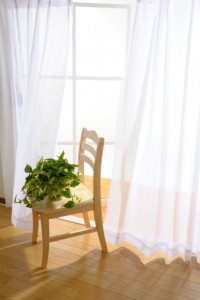Ridding Your Home of VOCs
VOCs are hazardous to your health and bad for indoor air quality.

VOCs, or volatile organic compounds, are one of the biggest polluters of indoor air. These compounds can be found in a huge variety of household products, and some of them may give off harmful gases for years on end. According to the EPA, VOCs can cause headaches, eye and throat irritation, and even damaged to the liver, kidneys, and central nervous system. Some VOCs, such as those containing benzene, methylene chloride, and perchloroethylene are even known to cause cancer.
Naturally you want to keep these kinds of harmful compounds out of your home. But where to start? There are literally hundreds of potential sources of VOCs in your home. Here are 5 of the worst VOCs sources to get you started.
Paint
Interior wall paint is the biggest source of VOCs in a home. By switching to low-VOC paint formulas, you can greatly reduce the amount of emissions. Remember, when using any kind of paint it is important to air out the space thoroughly during and after work.
Shower Curtains
Ever notice that your new vinyl or plastic shower curtain smells funny? Those are VOCs you smell. Studies have found that a new vinyl shower curtain can release over 100 different chemical compounds, so you’re better off opting for a washable cloth shower curtain.
Cleaning Products
Commercial cleaning products are another major source of VOCs. Anything that evaporates as you use it is most likely giving off VOCs. While in California we do have legislation requiring reduced VOCs in cleaning products, to be safe you might still want to switch to eco-friendly brands such as Seventh Generation. You can also try making your own household cleaners using more natural products like baking soda and vinegar.
Carpet
New carpets can release a lot of VOCs, especially when they’re first unrolled. You can try asking the installer to unroll it before they bring it to your home, but there’s no telling if they will oblige. A better option is to buy low-VOC carpets and also ensure that the installer uses low-VOC adhesives. And of course you will still want to air out the space after new carpet is installed.
Plywood
Pressed wood and plywood products like furniture and built in cabinets are also top source of VOCs, primarily due to the adhesives involved. You might want to consider investing in solid wood furnishings and cabinetry which will be better for the indoor air quality in your home and also last longer.










